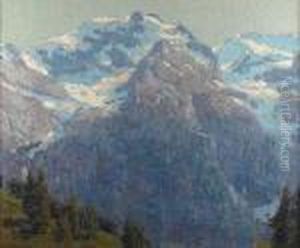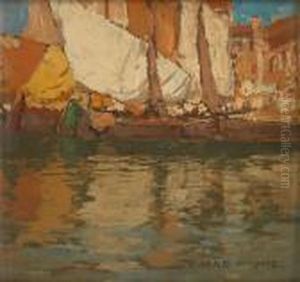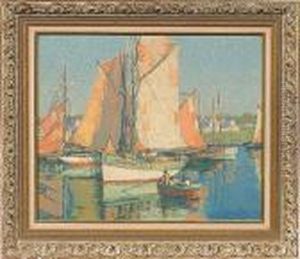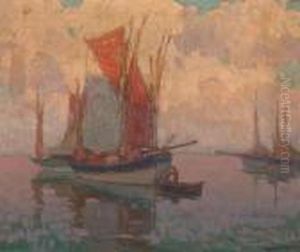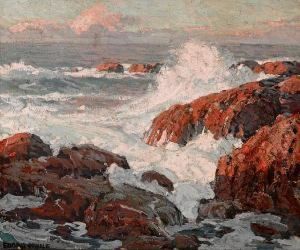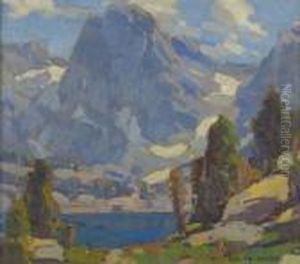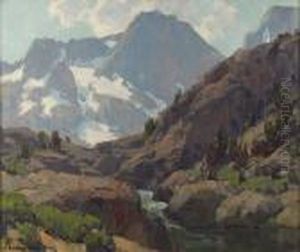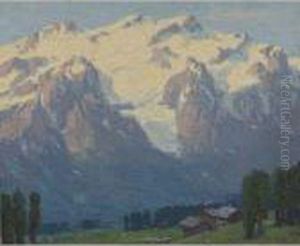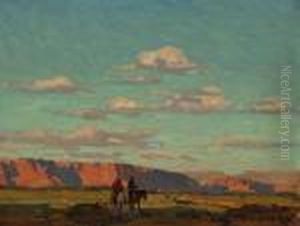Edgar Alwin Payne Paintings
Edgar Alwin Payne was an American Western landscape painter and muralist, born on March 1, 1883, in Washburn, Missouri. He is best known for his majestic and dramatic depictions of the American Southwest, particularly the Sierra Nevada mountains, the California coast, and the deserts of the Southwest. Payne's artistic journey began early in life when he left home at the age of 14 to become an itinerant painter, creating theatrical scenery and taking on various art-related jobs.
Payne traveled extensively throughout his life, finding inspiration in Europe, where he studied the work of the Old Masters, and in the landscapes of the United States, which became the primary subjects of his paintings. He had a particular affinity for the rugged beauty of the Sierra Nevadas and spent many summers painting in the Sierra backcountry. His most famous work, 'Sierra Nevada', showcases his ability to capture the awe-inspiring scale and grandeur of these mountains.
In addition to his landscape paintings, Payne also executed a number of murals, including commissions for theaters and public buildings. He was a member of various art organizations, including the California Art Club, which he served as president. He also authored 'Composition of Outdoor Painting', a book that remains a valuable resource for artists studying plein air painting.
Edgar Payne's approach to painting was characterized by a strong sense of composition and vibrant use of color. His work often featured dynamic, natural forms with a sense of movement and life. Throughout his career, he exhibited widely and won numerous awards, securing his reputation as one of the preeminent American landscape painters of his time.
Payne married fellow artist Elsie Palmer in 1912, who was also an accomplished painter. Together, they often painted the landscapes of the American West. Edgar Payne's legacy continues through his influential paintings, which have inspired generations of landscape artists. He passed away on April 8, 1947, in Hollywood, California, leaving behind a body of work that continues to be celebrated for its contribution to American art.


